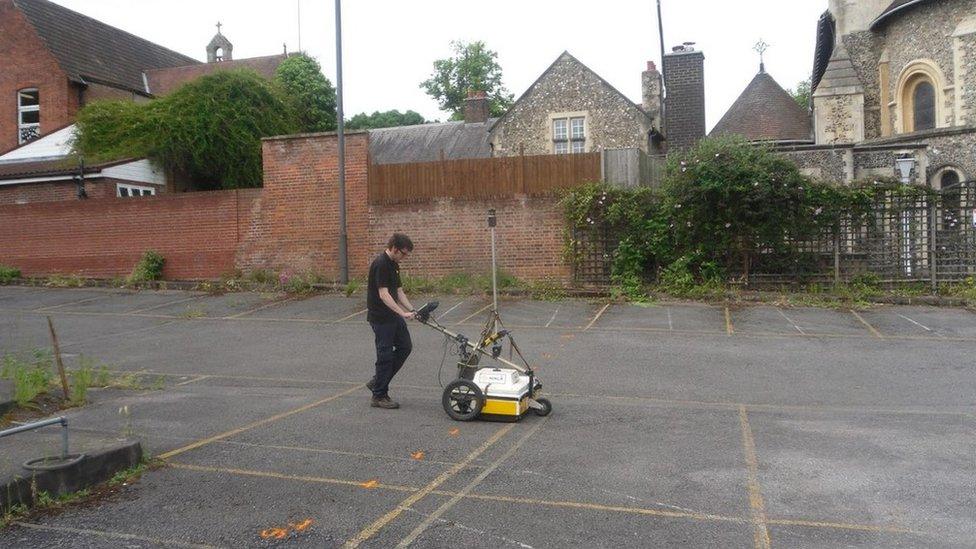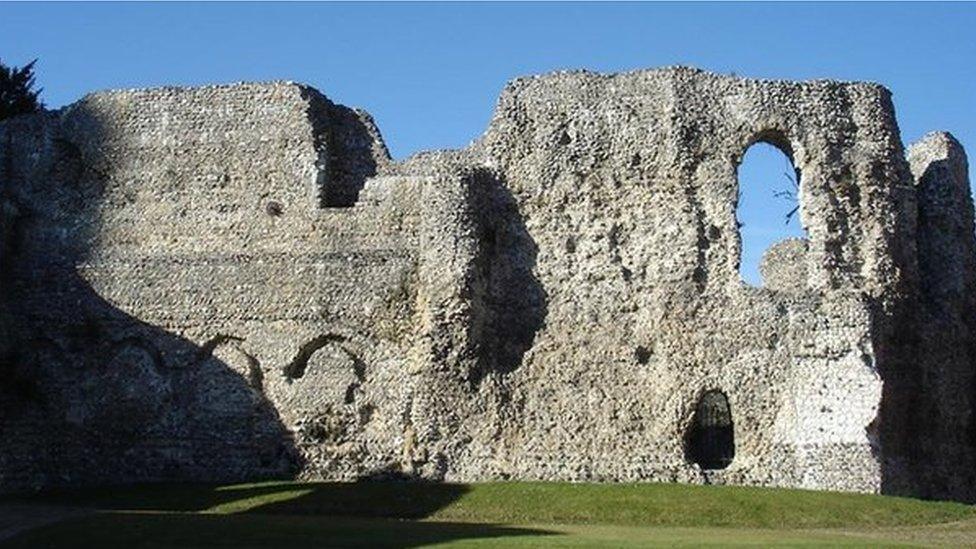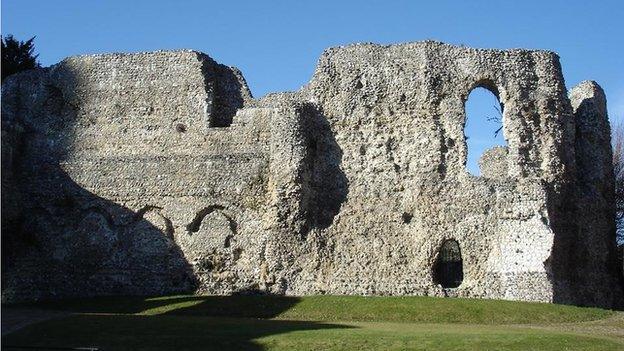Reading Abbey radar probe for King Henry I starts
- Published

The radar is being used on land near Reading Abbey to generate computer images of what lies underground
Survey work to find the tomb of King Henry I, who is believed to be buried at Reading Abbey, has started.
Investigations using ground-penetrating radar equipment have begun on land around St James Church next to the remaining ruins of Reading Abbey.
The Hidden Abbey Project hopes to uncover the high altar where the king and Queen Adeliza are buried.
The survey is the first comprehensive archaeological investigation at Reading Abbey for more than 150 years.
Further survey are due to be carried out on the abbey church, Forbury Gardens and Reading Gaol car park.

Henry I was the son of William the Conqueror and founded Reading Abbey in 1121

The ruins at Reading Abbey are expected to re-open to the public in 2018
John Mullaney of the Hidden Abbey Project said: "What we shall discover we do not know - maybe much, maybe little.
"I hope all our work will tell us more about one of England's greatest buildings and about the King who was buried in Reading."
The investigations are being carried out alongside conservation work on the 900-year-old abbey which closed to the public in the summer of 2009 after a survey showed its walls were in too poor condition.
After a successful bid for £1.77m of lottery funding they are due re-open to the public in 2018.
Henry I, son of William the Conqueror, founded Reading Abbey in 1121.
After his death in Normandy in December 1135, his body was brought to Reading sewn into a bull's hide. He was laid to rest in January 1136.
The abbey was partly destroyed during the dissolution of the monasteries by Henry VIII but there is no definite record of what happened to Henry I's remains.
- Published3 April 2016

- Published15 December 2015

- Published24 March 2015

- Published5 February 2015

- Published21 June 2014
